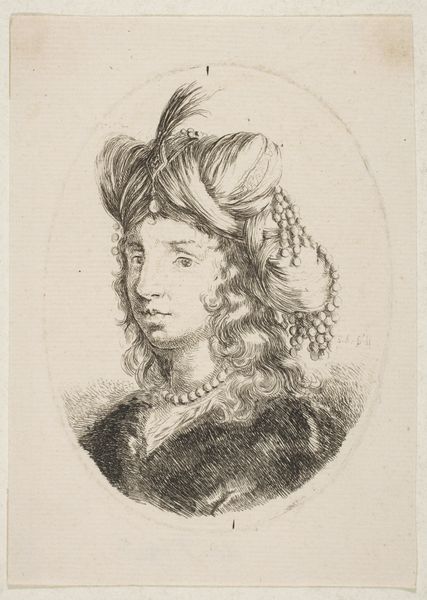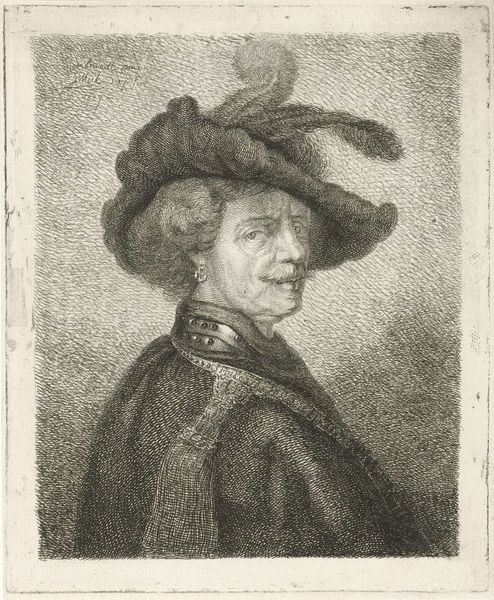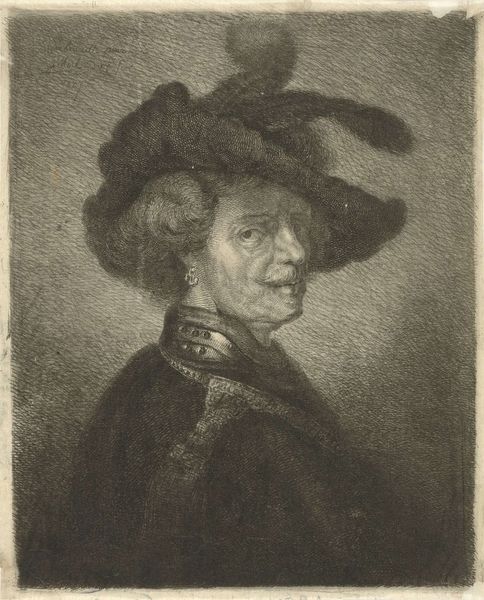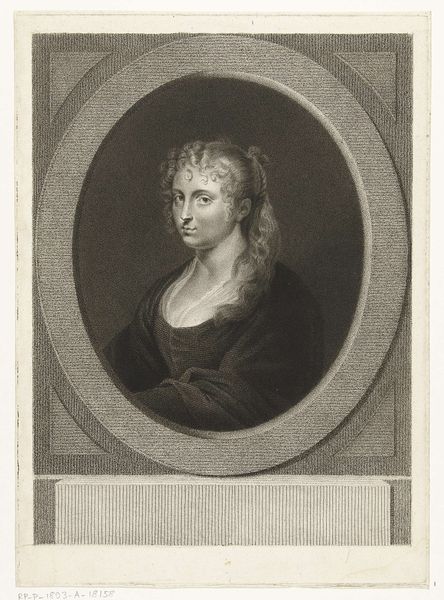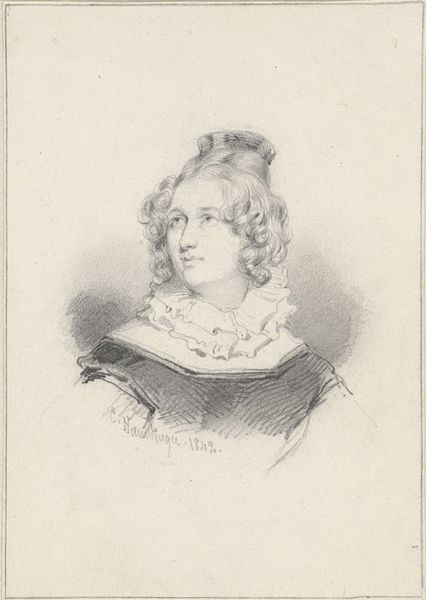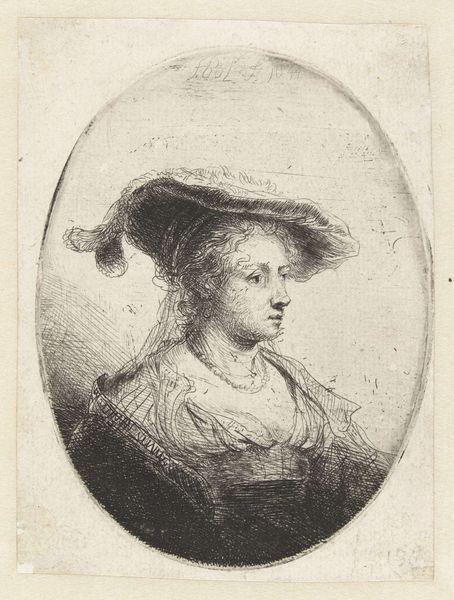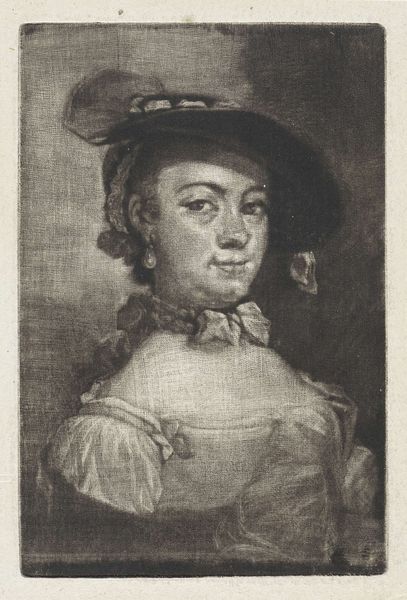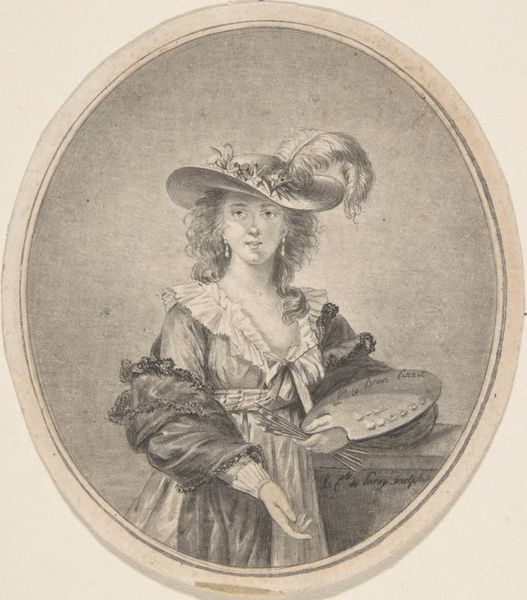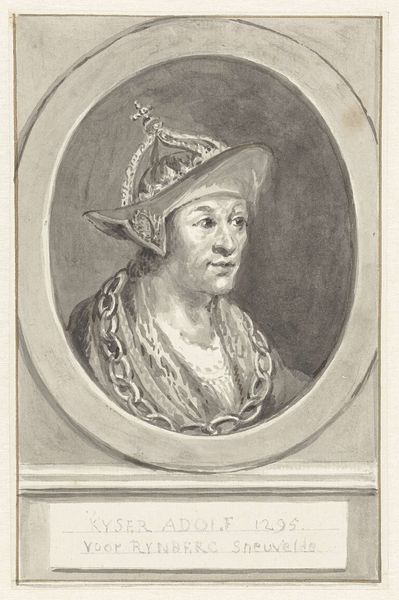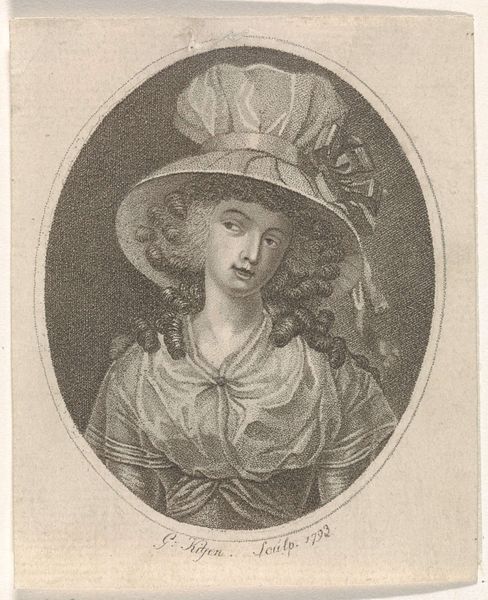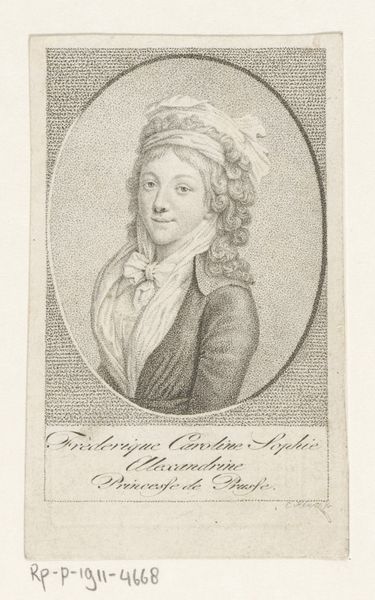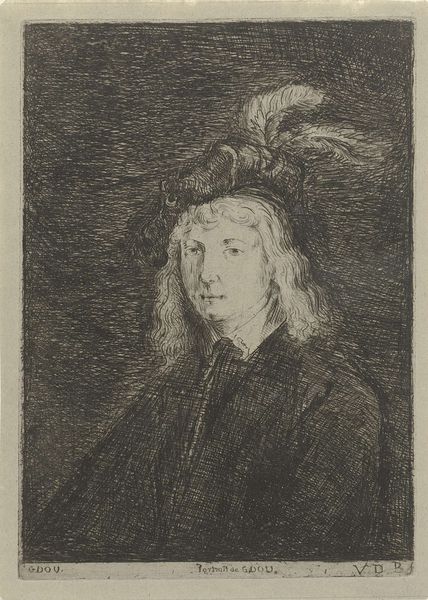
print, etching, engraving
#
portrait
#
self-portrait
# print
#
etching
#
old engraving style
#
classical-realism
#
history-painting
#
academic-art
#
engraving
Dimensions: width 182 mm, height 130 mm
Copyright: Rijks Museum: Open Domain
Curator: Before us hangs Jacobus Ludovicus Cornet's etching of Gerard Dou, created in 1851. The dark lines form a solemn oval around the subject, printed on a rather rough paper. Editor: It feels like an artifact from a lost age, doesn’t it? The almost ghostly visage framed by that oval. The textures alone hint at so much manual labour. Curator: Absolutely. Look at the etching itself. Cornet’s mastery is evident in the lines used to depict light and shadow. The feathered hat, for example, shows delicate craftsmanship. The face shows a youthful arrogance almost. Editor: And the clothing! It speaks of class and social status. That’s more than simple embellishment; it's labour materialized, showing how dress defines and reflects power structures within 19th century European culture. How was it circulated and received? I want to know what papers were available at the time. Curator: Semiotically, the gaze directs us, doesn't it? Dou's almost detached, intellectual air, the precise composition, all serve to present a certain idea of artistry. Editor: An artistry manufactured. These etchings were not unique commodities like paintings, but accessible wares circulating amongst many. So who actually got access to the materials, who bought it, who owned this image. It speaks more about class than Dou’s image, I wager. Curator: A good point. The context of production indeed shaped reception. However, by examining the choices in visual form—the lighting, the delicate linework of his hair, we glean insight into his psychological depths. It provides context, so to speak. Editor: For me, Cornet's print reveals art history through the physical traces of material practice, through the politics of reproducible imagery and engraving at that period. How the labour informed and inflected culture through material practices. Curator: Well, it's definitely an intriguing dance between form and function—isn’t it? Editor: Indeed, understanding materials provides insight beyond formal interpretation alone.
Comments
No comments
Be the first to comment and join the conversation on the ultimate creative platform.
